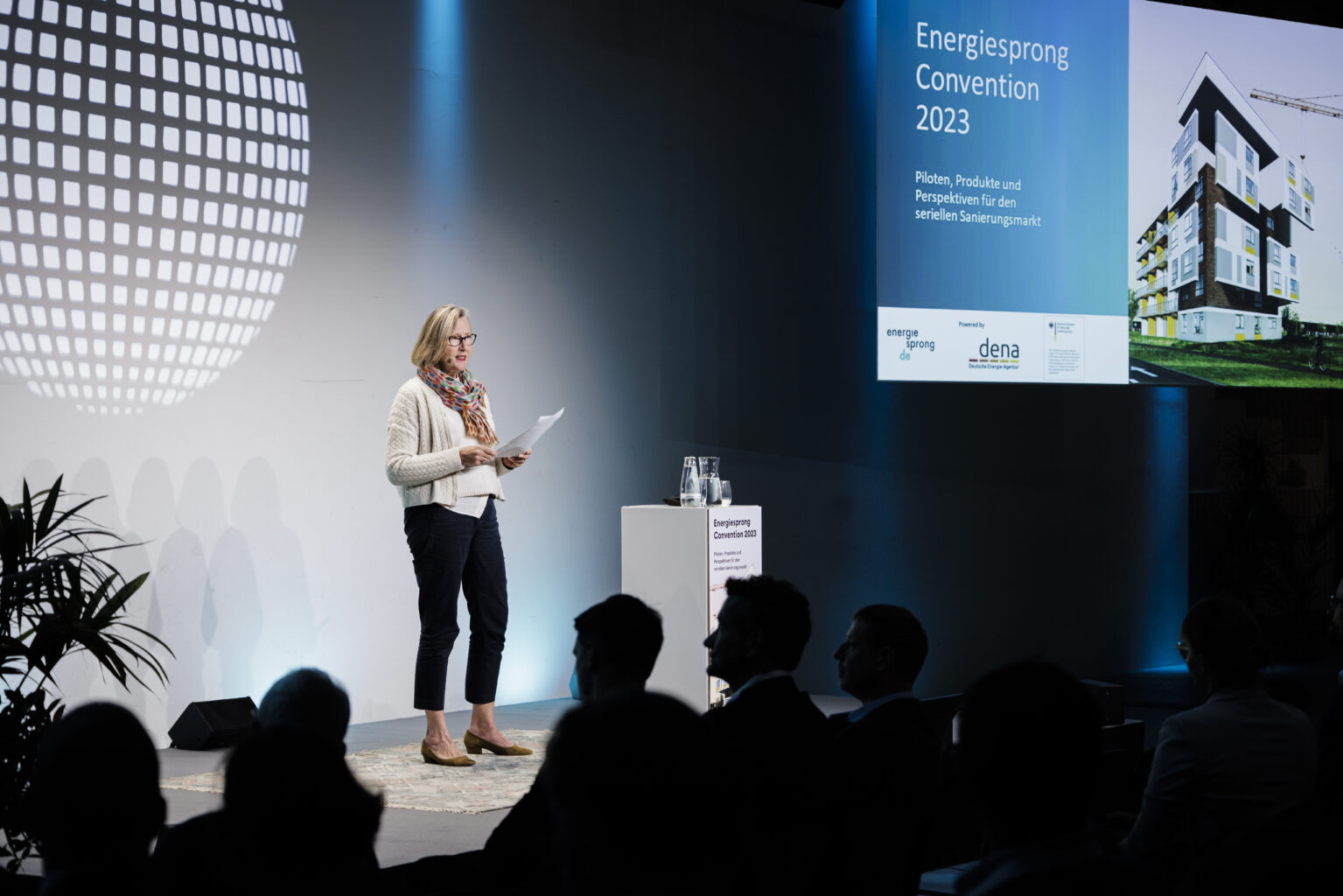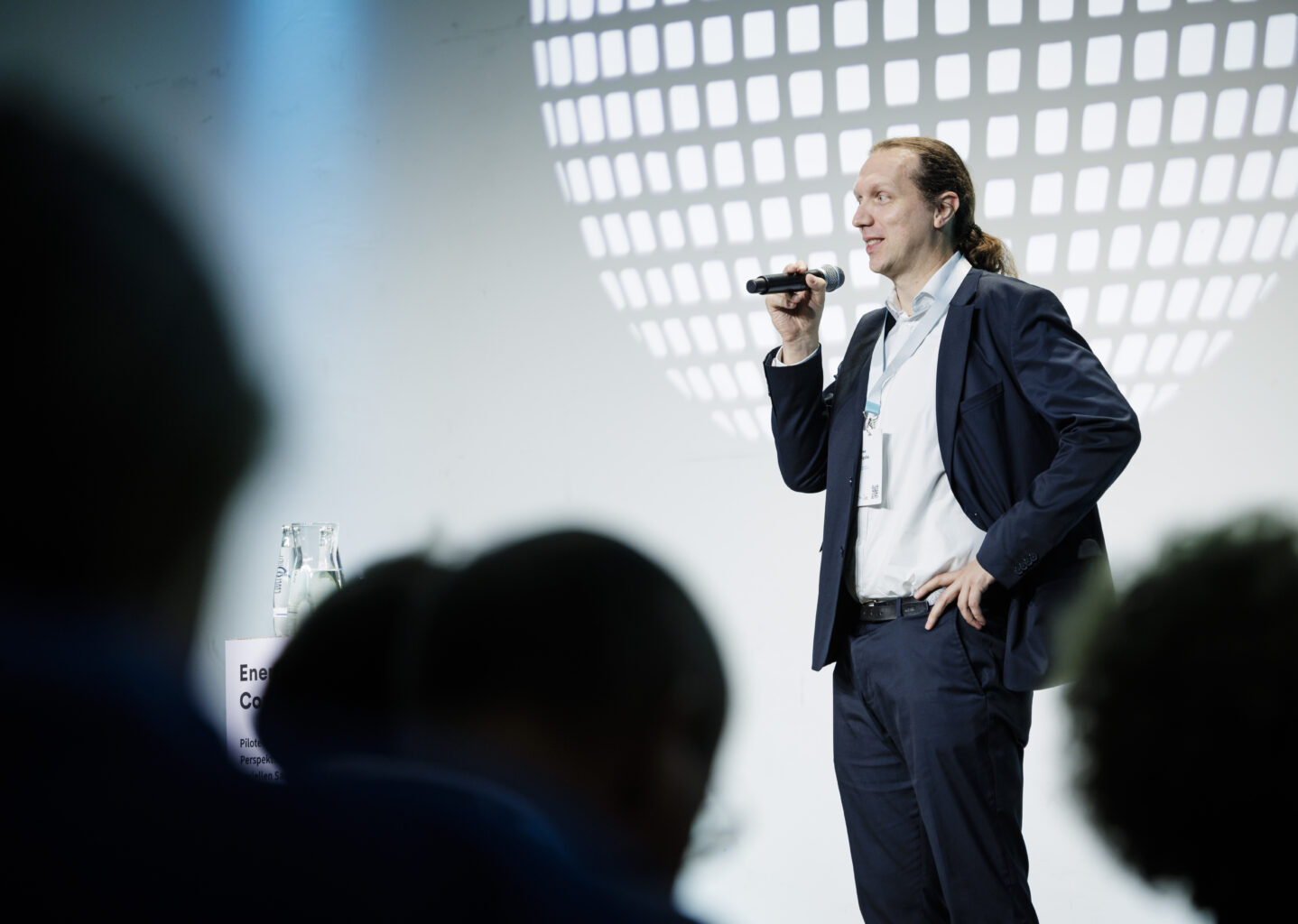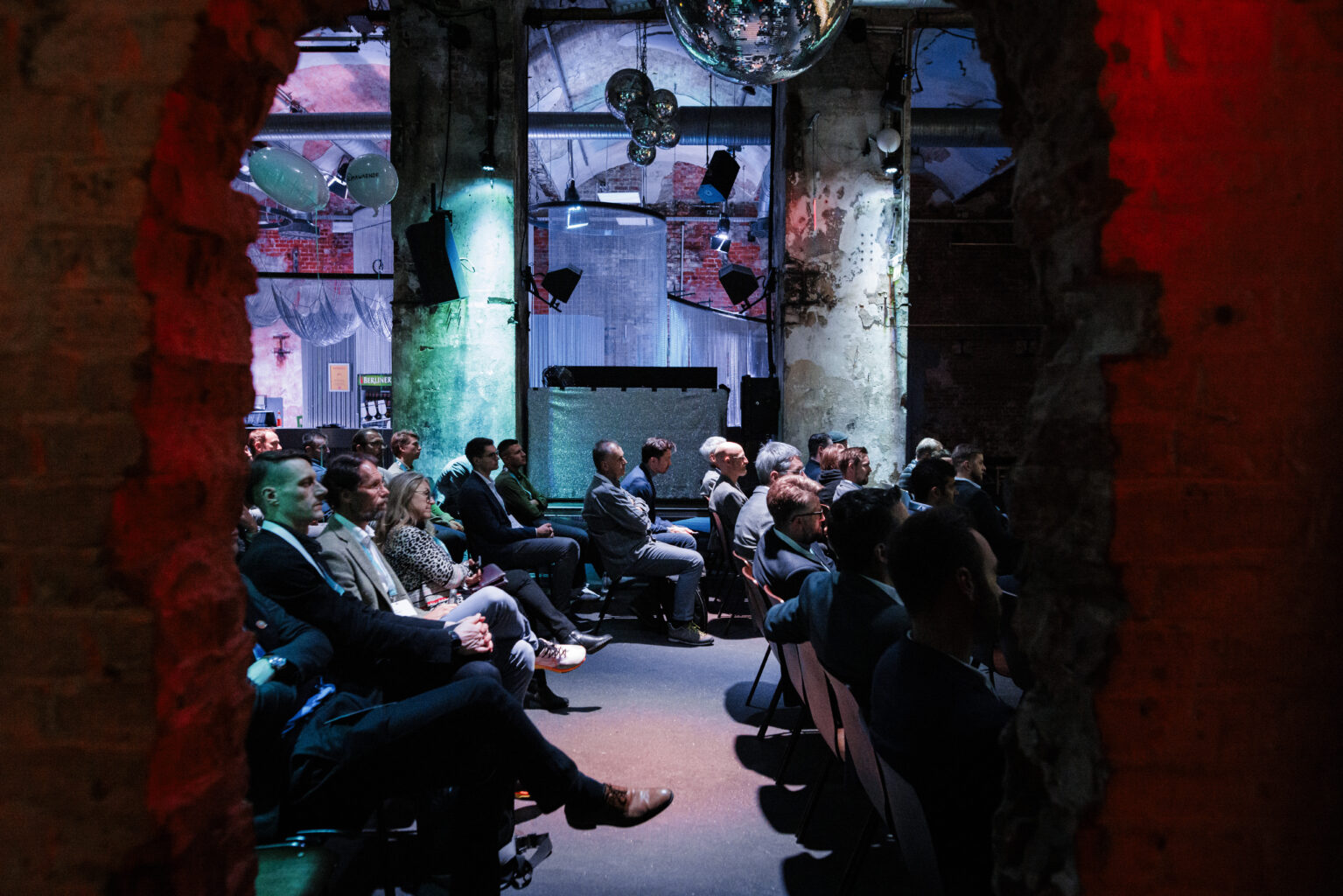Potentials. Perspectives. Partnerships
More than 300 frontrunners, changemakers and newcomers to serial retrofits met on 19th October for the Energiesprong Convention 2023 in Berlin. The focus of the industry event was on lessons learned and innovative solutions that make climate-neutral retrofitting existing buildings faster, easier, more cost-effective and tenant-friendly.

Photocredits: photothek, Felix Zahn
Currently, 10,000 residential units in Germany are being serially retrofitted. In order to achieve the climate goals by 2045, around 30 million residential units will have to be modernised in terms of energy efficiency over the next 22 years. According to expert estimates, around 30% of all existing buildings are, in principle, suitable for serial retrofitting. The opportunities offered by the innovative restructuring approach are just as great as the challenges.
Serial retrofitting as a key technology in the heating transition
In her welcoming speech, Kristina Haverkamp, Managing Director of the German Energy Agency GmbH (dena), expressed how impressed she was by the rapidly increasing number of projects and the constantly growing network: “The fact that we can welcome three times more participants here today than last year shows the spirit of optimism and dynamism of the serial retrofit market. In order to advance the transformation into having a climate-neutral building stock and winning the battle against time, we need your courage, your innovative solutions and your expertise. At dena, we are here to support you with all your challenges with our dedicated market development team.”

Kristina Haverkamp, Managing Director of the German Energy Agency GmbH (dena)| Image: photothek, Felix Zahn
Dr. Volker Hoppenbrock , Head of department at the Federal Ministry for Economic Affairs and Climate Protection (BMWK), highlighted the innovation potential of serial retrofit solutions in his keynote speech: “Nothing is more powerful than an idea whose time has come. Within just a few years, an unconventional idea has developed into a high-growth market segment that opens up attractive business opportunities for all players along the entire value chain. And it is an innovative approach that inspires builders and residents alike. With this tailwind, serial retrofits can become a key technology for the heating transition in existing buildings.”
From a cooperative innovation culture towards common standards
After a successful pilot phase in the multi-family housing sector, the knowledge gathered in this sector is now being transferred to entire portfolios of housing stock: higher-story buildings, single and two-family houses and non-residential buildings. The expansion to other building types is reflected in the rapidly increasing numbers: 49 projects have been completed (2022: 4), 25 are under construction (2022: 9), and a further 146 are in various phases of planning and preparation (2022: 51).
This dynamic development is mainly due to the frontrunners in the industry, those who were not satisfied with the status quo and who had the courage to do things differently. The entire industry benefits from your experiences, insights and, sometimes, disillusionment. A wealth of experience is now available from the projects implemented so far, which shows what has proven to be successful and where there is still potential for improvement. The lessons learned form the basis for developing common processes and quality standards.

Uwe Bigalke, Head of the market development team for serial restructuring at dena | Image: photothek, Felix Zahn
“Serial retrofitting not only changes the planning and construction process, but also the way we work together. Cooperation, collaboration and communication are the drivers of this transformation. What is needed is more transparency and less competition. In order for the entire industry to learn from the experiences of the pilot projects, new forms of collaborative planning and construction must be established – between disciplines and also between companies that compete with one another. The task is so big that it requires the experience and knowledge of all those involved,” said Uwe Bigalke , Head of dena’s market development team for serial restructuring .
Lessons learned as a guide on the path to innovation and scaling up
Dirk Förster-Wehle, from TAG Immobilien AG, underlined the importance of district development in advance of serial retrofit projects: “As you can only spend each individual Euro once, it should be invested where it achieves the maximum CO2 saving.” As a central tool, portfolio analysis makes it easier for neighbourhoods to develop tailored decarbonisation strategies. Clustering buildings together is the basis for achieving scalable retrofit concepts that lead to time, resource and cost savings in the long term.
Tim Lodes, from GEWOBAU Erlangen, presented the largest German Energiesprong project to date. The municipal housing company wants to serially retrofit around 6,000 residential units by 2027. In order to put as little strain on the tenants as possible, the building technology is installed in ground cubes. The individual apartments are connected via backpackers integrated into the façade. “We are now creating 120 m2 of façade area per day, so that the on-site construction work per building won’t take longer than two weeks,” says Lodes. In addition, the buildings will be expanded with 135 additional apartments.
Mathias Ponitka from LEG and Andreas Kipp from Renowate explained how long-term collaborations create stable demand and thus enable steps along the scaling up path to be taken faster. As a joint venture between LEG and Rhomberg Bau, Renowate has extensive knowledge and expertise in the housing and construction industry. As part of 14 pilot projects, the aim is to jointly develop a cost and time-saving serial retrofit concept that is suitable for the broader market.
Tenant communication: a decisive factor

Thomas Meißner, Board Member of WGaV Image: photothek, Felix Zahn
Thomas Meißner, Board Member of WGaV, has set energy standards with his serial retrofit project in Cologne-Zollstock . The building achieves 40 EE standard and generates 20% more solar power than the residents need. For him, two things are crucial to the success of serial retrofit projects: good planning and transparent communication between all those involved in the project. “Above all, keep in touch with the tenants, listen carefully and offer a treat every now and then,” advises Meißner.
This is an assessment shared by Samuel Paulsen from Vonovia. He is currently overseeing a serial retrofit project in Witten . The tenants were initially sceptical about the retrofit. There were lots of doubts as to whether the modernisation levy would really be offset by the heating cost savings. “After a joint information event with the construction company GAP Solutions, where the concept and technical solution were explained in detail, we had the residents on our side,” reports Paulsen. The innovative solar honeycomb façade is a real eye-catcher and significantly enhances the area.
Energiesprong + ESC – a promising approach for municipal housing stock
Schools, which make up around half of all municipal buildings, are in a particularly poor energy condition. According to a study by the Fraunhofer Institute for Building Physics, the heating energy requirement of an average school is 211 kWh/m2 a, a value that falls into the second worst energy efficiency class. Susanne Elsen, from the Tempelhof-Schöneberg district office, gave a presentation on her experiences with serial school retrofits. With a serial retrofit concept consisting of prefabricated façade elements in wooden panel construction, decentralised ventilation devices and geothermal probes, the energy consumption of the Marienfelder elementary school, built in 1971, fell by more than 80%.

Serial retrofitting was considered further in five exciting workshops. | Image: photothek, Felix Zahn
Serial retrofitting was given further thought in five exciting workshops. The non-residential buildings workshop addressed, among other things, the question of how energy modernisation can be achieved despite the current situation of strained budgets. Around 85% of the 175,000 municipal buildings are in poor energy condition. The costs are correspondingly high: the 12,000 German municipalities spend almost 4 billion Euros per year on the heat and electricity supply to their properties. Serial retrofitting, in combination with energy-saving contracting, could be a promising way to make municipal assets fit for a climate-neutral future. With energy-saving contracting, a service provider takes over the financing, planning and implementation of the energy efficiency measures. The investment is refinanced through energy savings. In this way, even municipalities with little financial flexibility can increase the retrofit rate of their properties.

Image: photothek, Felix Zahn